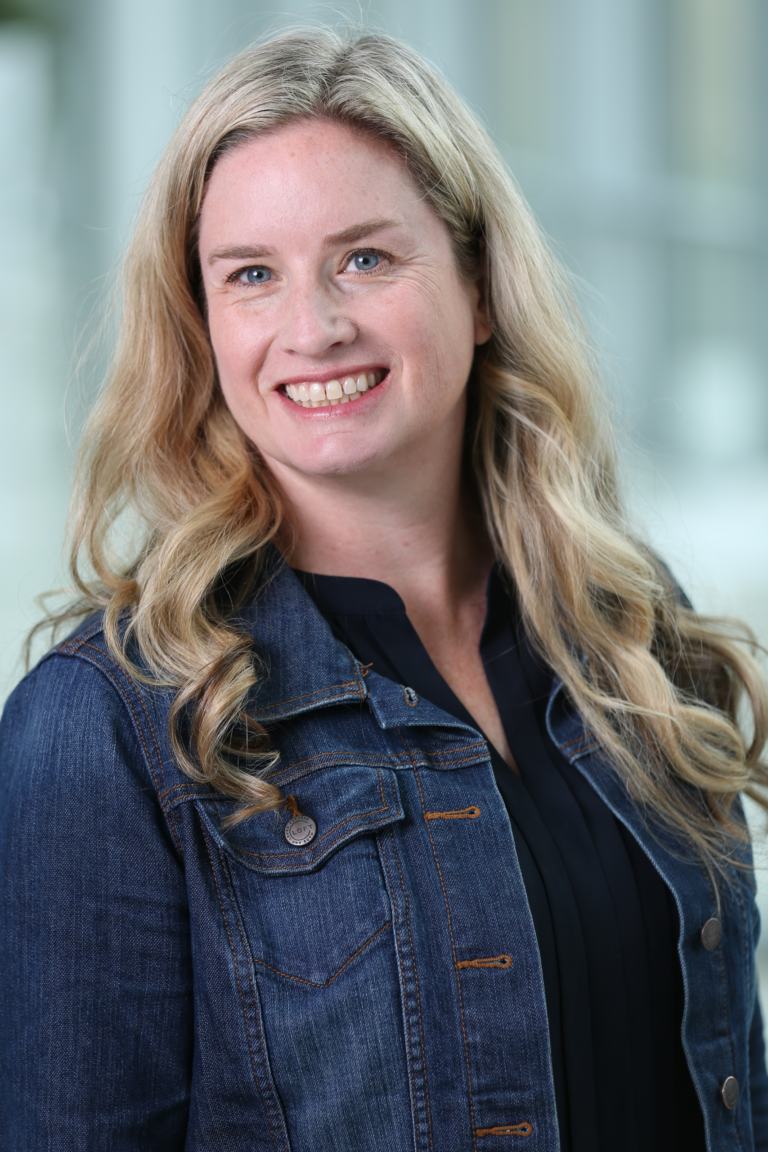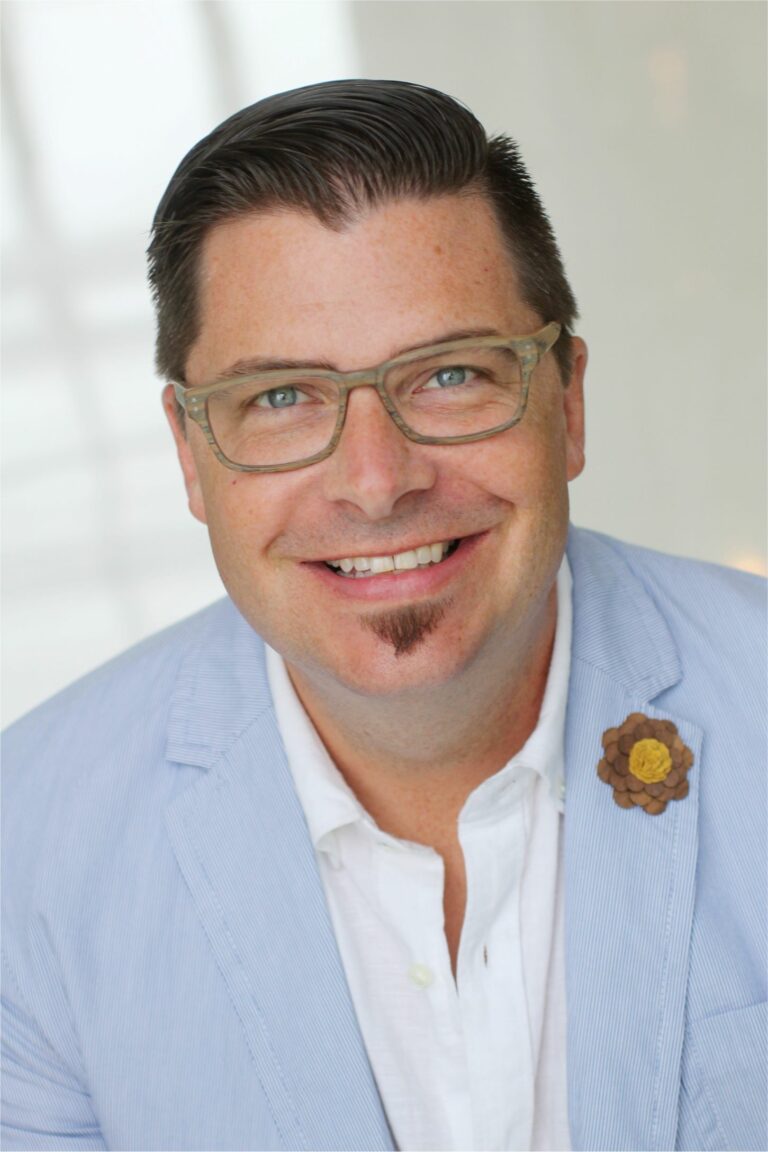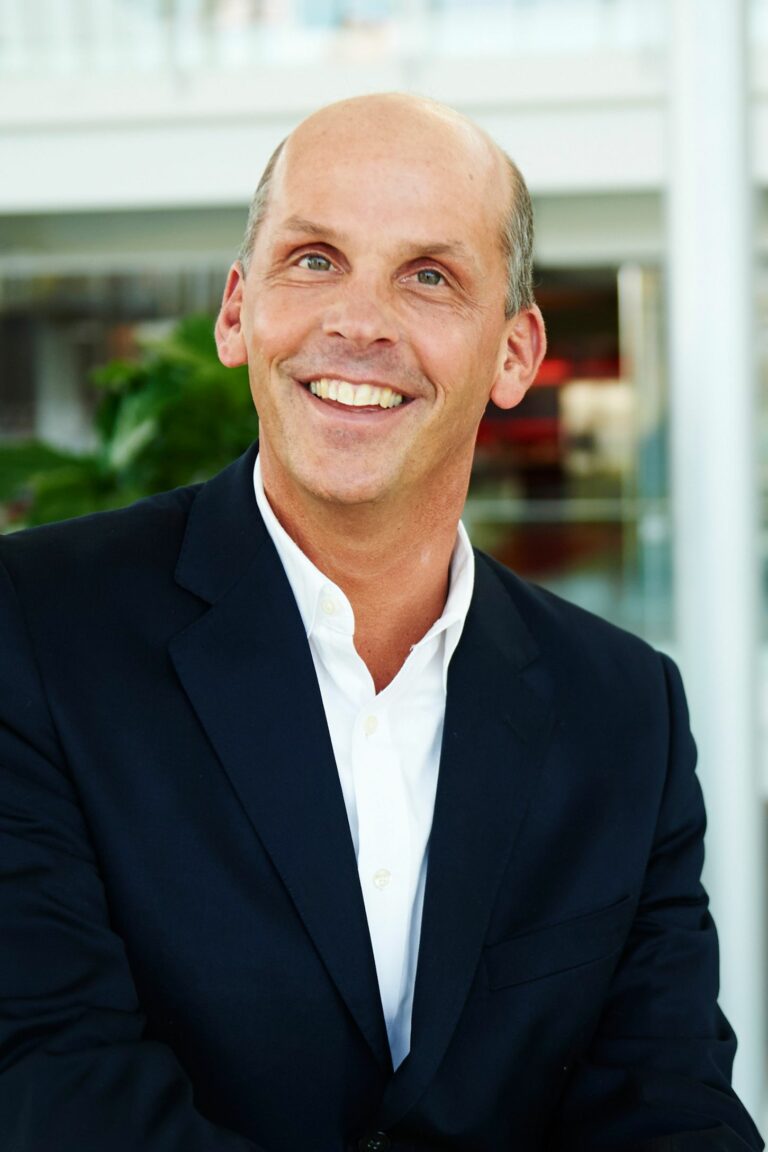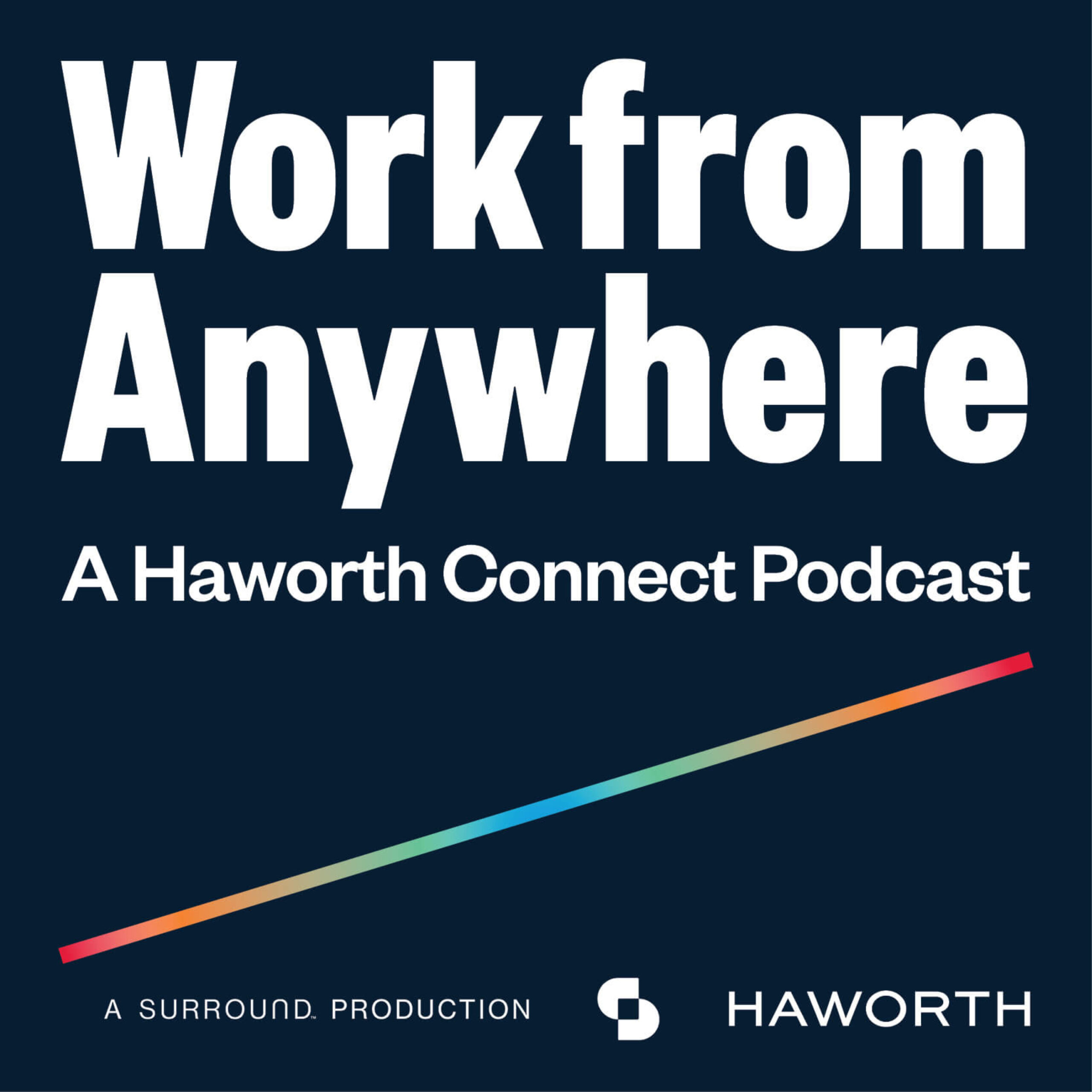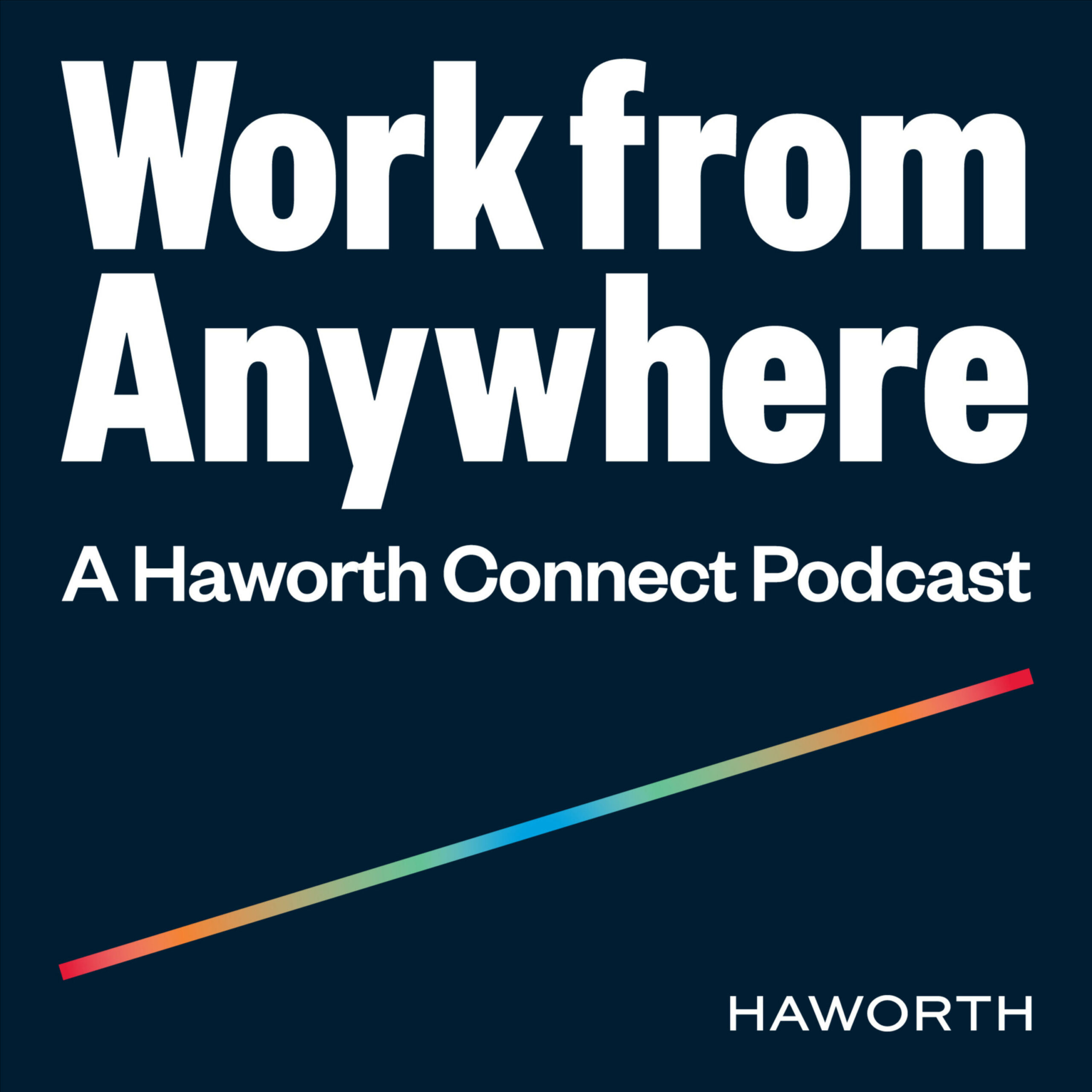Designing space is about hosting talent and governing occupancy. Being adaptable and honoring the people in your organization helps retain talent and improve your bottom line.
Haworth’s Christine Gritter explores a wide range of design topics with podcaster Amy Devers, including comfort, texture, choice, and individual control over office workspaces. Learn how to help employees feel their best and do their best work within an office space.
Guest: Amy Devers, Host and Creator of Design Podcast Clever
Host: Christine Gritter, Haworth Corporate Marketing and Content Manager
Although the transcription is largely accurate it was generated in part by an automated service. In some cases it is incomplete or inaccurate due to inaudible passages or transcription errors.
Christine: [00:00:00] Hello, and welcome back to the Work From Anywhere podcast. I’m Christine Gritter, your host for this episode. Today we’re talking with Amy Devers, who is the host and executive producer of Clever, a design focused podcast. She also teaches furniture design at the Rhode Island School of Design. And today we’re going to be talking about culture, organizations, people, spaces, and everything that’s going on in the workspace today.
Amy: Welcome, Amy. Thanks. I’m happy to be here.
Christine: So, in this series of episodes, we’re really kind of talking about organizational culture and just looking at how organizational culture is being hindered or helped or driving the conversations around how people need to connect and what choices we make on where people work.
What have you been seeing around that? What have you been hearing in the world out there? Obviously you [00:01:00] do a lot of working from home. You also connect within offices and you talk to a lot of different people about what is the future of our industry, so what are you hearing?
Amy: Well, organizational culture is something that, it’s in transition right now.
It’s always been important, and I think people have been paying attention to how to establish it, keep it, maintain it, but the pandemic obviously disrupted everything. And so now we’re in a position where people have enjoyed certain freedoms. And also suffered from the lack of socialization that happens in the office.
So how to sort of balance that is the trick right now. How do we create a space that. Encourages the social aspect of work because that’s more important now in the actual facility because people can get their work done from almost anywhere and are, are used to getting it done from home. So the brand values [00:02:00] really have to come through in the creation of a space that supports both productivity, but also really supports.
A kind of interaction with the team that ultimately is the glue, the connective tissue that keeps everyone together as they then become atomized with their newfound freedoms to get their work done from home or from wherever. What do you think is
driving some of these decisions? Like you said, we’ve, we’ve had choices.
We’ve had flexibility. We’ve had options on what to do and where to work. Because in reality, many people for a year or so there couldn’t go back to the office. And it’s three years, two years later, and we’re still trying to figure out where we want to be, right? So thinking about that flexibility, what do you think is driving the choices people are making on where they work today?
Or their decisions on [00:03:00] how they feel about certain Organizations deciding people need to go back or not having people go back. Is there an underlying thing that really makes you want to be back in the office over choosing to be home? That’s a really interesting question because I think that’s the difficult piece because it’s different for everyone.
It’s a case by case situation. I think some people really enjoy the freedom of scheduling, especially if they have other commitments. They have to work around family and such. I think some people enjoy the freedom of Being able to actually sort of situate themselves in a place that helps them to be most productive.
Sometimes that’s comfort, sometimes that’s silence, sometimes it’s daylight. And so, in any way that you can translate those freedoms back into the workplace. Is going to be helpful. I also think there’s a weird little mix of offering [00:04:00] freedom, but then when people do come back to the workplace, sometimes it’s empty because there’s no coordination about who’s going to be there when.
So that’s a difficult piece. How do you keep the freedoms while also encouraging the socialization? I think that’s going to be up to each company and their values, but I do think that the main reason to come into the office now is.
So what can you do in the workplace to make that as appealing as working from home or working other places? And for me, what I’m picking up is there are certain things that you can do like comfort. The more residential a place feels, the more options a person has in terms of where they, they plant themselves, next to a window, on a couch, in a quiet room, not making it assigned seating, you know?
And maybe even rethinking [00:05:00] conference rooms so that they’re a little more like a living room. I think people feel more comfortable. They also might sort of click into a more warmed up social space, almost like a Pavlovian response, if they’re sitting in an environment that makes them feel comfortable and at home.
And so thinking about supporting the cultural aspect or the socialization aspect that happens in the workplace, I think the key thing is allowing those same freedoms in terms of how you like to get your work done, but also making it feel welcoming and like an enjoyable place to be.
Christine: So what it’s sounding like is really the expectations of a workplace have really evolved, and probably quickly in the last few years.
We’re expecting it to support us in different ways and to be able to be not just a place where we go to work, but that we can actually thrive. And some of the things you’re talking about [00:06:00] are like how we support the different senses and that sort of thing, right?
Amy: Yes. How we support the different senses, neurodiversity, differently abled people, but also everybody has a different sort of attention span and focus level.
So how do you provide those options? And also, peel to the senses. I think texture is a really gorgeous way to do that. Introducing texture wherever you can. I don’t think that necessarily means… faux fur, like that’s not what I’m talking about. But I do think if you look around the space and it’s all commercial materials that are designed to be cleaned easily, that’s not comfortable.
That’s sterile. So adding a bit of warmth and texture wherever you can, I think really makes the space more appealing, more comfortable. And I also think a variety of seating so that people can feel, find what makes their body feel right when they’re getting work done or when they’re [00:07:00] socializing. When you can feel good in your body, you can really connect to people on an easier level.
Christine: What’s interesting to me as we talk about this is the fact that so much has been driven in the past around workplace design to support Just what the organization felt was needed at its base level to have people come in and do work, right? And there’s something that we even talk about that’s intuitive in design, that’s affordances.
And we come, have a conversation around what are the basic things you need to do your job. And then what are the little things that come in with workplace design that are intuitive to designers, but aren’t necessarily identified? By those who are making decisions on the full
aspect, like you have somebody in an organization who doesn’t understand design, making decisions on what chair and how many desks and what [00:08:00] spaces are needed there.
And we’ve had to just work through that in the past, but so much more is now being driven by what do we have that actually supports the individual. Versus just what are the basic needs to show the organization’s brand, right? And I feel that’s an interesting push pull we have going on right now.
Amy: Absolutely. I’m so glad you brought that up because I think that’s really the interesting space, especially for designers, because designers are now, or at least the people who are creatively in charge of what this space is and does, right? So they’re working with the decision makers about what to buy and how to outfit the space.
So they have to translate the brand aesthetic and the brand values into the physical space. The focus has now shifted from productivity and bottom line to how do we make this space? appealing to for all of our people so [00:09:00] that they want to work here so that they want to be with the other people and so that they can do their best work knowing that they’ve already got a home office and they don’t actually need to be here.
So then the interesting piece comes with translating the brand values into what we’ve just talked about, like texture, choice of seating, choice of daylight, giving people more control over their atmosphere, their temperature, and It’s not about how do we govern people. It’s more about how do we host our talent.
Christine: Love that. I love that. If you’re looking at the business objectives, right, and you want to talk to those business leaders and those decision makers. The conversations are around what is going to help us with attraction retention, what is going to help us with engagement, which will lead to productivity, but without that engagement with the organization, without your feeling you belong in that organization, which is [00:10:00] translated by, do I belong in this space?
It’s not some place you’re going to stay when you have options. So that’s, that’s kind of the change of the conversation, it seems like, and again, like you’re saying, there’s such a bigger lift now on the side of designers to be able to, to have the ability to do that, but also be able to justify it right in a new way.
Because. Back to organizational culture, many people are saying, well, our culture is not one of sofas and cafes and sit around and chit chat. We’re a hard driven sales organization, but there’s ways to interpret that culture and yet also bring in those elements, don’t you think?
Amy: So I like the example of a hard driving sales organization because that’s a good one, right?
And I think that historically, we may have translated that fairly literally into the workspace. We don’t need to do that anymore because during the pandemic we learned that everybody [00:11:00] still did their jobs probably very well from different situations. So now what we need to do is take that input, that information, and really translate it into how does our Salesforce actually perform the best.
What makes them feel the most motivated? What gives them the environment that helps them feel most productive? And what allows them to come together and compete and also assume ownership over their own goals? So, that doesn’t necessarily mean a space that’s unwelcoming or a space that’s stark or somehow uniform.
I think what that means is a survey of your talent and asking them when do they get their best work done and how do they feel and what’s the environment like when they’re actually feeling their best selves. And you can translate that all into a place that offers those in different stations in different chapters around the facility.
Christine: So performing their best and [00:12:00] performing their best ultimately gives results for everyone, right? The organization, you want your people performing their best or your organization’s not performing its best.
Amy: I know personally, when I perform my best. I feel really good about myself. I feel really good about the job I’m doing, and I’m excited, and I want to go back and even, and outperform myself every day.
If every day is a slog against my environment, if I can’t concentrate, if I can’t focus, if I’m uncomfortable, if I feel like cold, if I have to really work against the space that I’m in, I’m not doing my best. It’s a drag on my performance and yes, each individual feeling good doing their best is ultimately what helps the organization perform their best.
But it’s about the individual. Ultimately, it’s about the individual and then the collective. We keep saying it’s all about choice. We talked about that earlier, right? It’s about the choices we make nowadays. It’s about having flexibility to have that choice. You [00:13:00] create a space that people want to come back into, that they perform, that they’ll want to continue to go back to, right?
Almost as a habit of now I know this is where I go and I enjoy it when I’m there. And guess what? Now suddenly you have people back in, so when you’re trying to go for that collaboration, there’s actually people there to collaborate with. So that’s the biggest challenge is the conversation around, are you creating a mandate that you need to be there so other people can collaborate with you?
Or are you making it something that you choose as an individual to go and do? And I think that’s hard for a lot of organizations to think about because in their mind, Work is work. You go to work, right? But we’ve proven work is now not about a destination, you know, wherever we do it, it’s still work. And we want people to be able to work together in person.
Christine: So we want to create an environment for that first and foremost.
I like the idea of [00:14:00] that performance of, if you’re performing your best there, you’re going to feel better. And people might want to actually talk to you too, right? To collaborate.
Amy: Well, I mean, the in person collaboration piece is a really important one because I know that I perform better when I have other people to bounce ideas off, when I’m actually just absorbing through osmosis by witnessing how they do their jobs and picking up tips and ideas.
I gain a lot more information when I can just ask something quickly as opposed to like having to type an email and wait for a response. So, how to encourage that? I don’t have the answer, so far be it for me to say, but I do have some thoughts. One of them is that a little bit of structure, a little bit of mandate is probably a good thing because then everyone can plan.
I’m a planner, so I think that if, if my work week was partially mandated and I knew that way in advance, then I [00:15:00] could plan, then I can adjust my schedule. So, that does give me. The freedom I’m looking for, knowing that when I do go into the workplace, I am going to see the people that I want to see. That’s my personal opinion.
Christine: I like that. It’s balance. Again,
We’re all about balance, right?
Amy: Yes. Yes. Yes. Yes.
Christine: Balancing the choices, balancing what’s going on as far as who’s deciding. It’s almost like now we’re curating a work situation with the people that need to be there, right?
Amy: Yeah, yeah, I think that’s a really good way to put it.
I think that’s also a really good lens to think about it through because When you’re curating, you’re selecting the best in order to create a situation that is kind of a floral arrangement that really works. And when you’re just sort of blanketing, like, making a uniform choice for everyone, that’s not curation.
That’s a gym. That’s an empty gym. [00:16:00]
Christine: We don’t need that.
We need the, we need all the tools to be there in that gym.
Amy: Oh, that’s good.
Christine: The reasons people want to go back or the reasons that you go back to the office, I think vary too. Collaboration is what we all talk about, but that means different things for different people, right?
As you go back, certain organizations are like, when you come back in the office. We want you here because we’re going to have these social events and we’re going to connect and we’re going to bond as a team. Others are less motivated by that and more motivated by I want to see what my assignments are.
I want to be able to talk face to face about who’s doing what. Where others actually need that for the in person training or that kind of thing. So just thinking about that type of collaboration and that motivation would dictate. A little bit more of the space, do you think, or would you still have a similar approach?
Amy: That’s a good question. And I think there’s another one that, that warrants being added to the motivation, which [00:17:00] is I don’t want to miss out on the decision making that’s happening that could allow me to do my job better or help me in my upward mobility. And I think there is a real chasm that we could fall into, which is In this curation or this partially mandated scheduling where certain people are sort of kept powerless by being away from the decision making venues when the decisions are being made.
And I don’t think that’s good at all. So I think in that partial mandation, there should also be, obviously decisions are going to be made via email and telephone calls. So you can’t, you know, right. But I do think it should be incredibly transparent. And I think, yes, the workplace needs to have spaces that facilitate all of those things that you just mentioned.
Training and collaboration. We all have this idea what collaboration looks like, but for me, what it looks like is [00:18:00] being able to go chat with somebody about something. Here’s an idea, I want to push it forward in this way. And then being able to recede to a corner where I’m not disturbed to flesh out the idea.
And give it some strength and some options and then go back into the collaboration pool and say, here’s what I’ve come up with. But I can’t stay in a pool of people all day long and get my best work done. I’m too distracted by everyone else’s energy, even if they’re not speaking. So developing a space that also has, like, beautiful moments to come together that I think feel a little bit more social than work oriented.
But also places where you can recede to, feel undistracted, so that you can really concentrate is going to be important. And then also, yes, training. I know, for me personally, and I hear this from other people, the individual training is fine. You get to ask all the questions you want, and you get hand [00:19:00] holding.
But when you’re training in groups, you also get the benefit of learning from everybody else’s questions. Things that you might not have thought of, bonding with your cohort. I mean, there are all these things about being in person in a group that help you understand people’s strengths and limitations so that you can work with them better.
All of those things need to be translated through the design palette, and that’s a really interesting challenge.
Christine: Yeah, I think more and more spaces within a workplace. are going to be more and more varied than they ever have before, and how are you going to do that with that same amount of space, the same amount of choices?
Amy: I know, isn’t that exciting though?
Christine: It is exciting. It is exciting. I mean, just the focus on human performance and human centric design is more important than ever. A hundred percent. And organizations, that’s exciting for all of us who are going to be using the spaces, right? And seeing what, what’s coming out about it.
It’s just a [00:20:00] conversation at that level to be able to, like we talked about in the beginning, marry the business objectives along with the space. While thinking about that human and what they’re gonna do throughout the day,
Amy: It’s that, and I think there’s a fundamental tension that needs to be acknowledged, which is there are people who really like to rely on metrics and formulas because that is where they derive predictability and control.
And it’s very easy to make a case on things that have already happened. Past performance data, that’s data that exists. But if we only respond to data that’s already from how we’ve done things before, we never actually push forward into uncharted territory. So we also need our business leaders to try and think of their brand and their space from a position of creativity. Rather than math.
Christine: A little bit more of [00:21:00] the arts, a little less of the science.
Amy: A little bit of both. Well, yeah, and I think there’s a reason for that, right? Because creativity is, in my mind, it’s adaptability. So we all know that adaptability and honoring the humans that work with you and for your organization is a way to retain talent.
Ultimately, it does affect the bottom line. It’s just not as easy to map out because you’re not basing it on data and numbers. So it does involve a lot more trust and belief, but if you make that investment in your people. Your people feel it and that’s important.
Christine: That’s awesome. I think that’s a key point right there.
One last question. If you were talking to someone right now who had an environment that it was one to one desk, maybe a conference room here or there, typical of the offices that we left behind, what would you say would be the first advice you [00:22:00] would give to consider as they go forward?
Amy: Can I say two things?
Christine: Yes,
Amy: I would say take a really good look at your lighting. If it’s all fluorescent, if it’s not daylight, if it’s not adjustable, I think that’s the easiest thing to change and that has such a big impact. The other thing is allow people to move their desks. If they can move them to a place. Where they feel more comfortable, that gives them a little bit of ownership, a little bit of control over their own environment, and you’ll be surprised to see the configurations that come up, but people tend to find order, so it won’t be chaos like you think it will be.
Christine: I love it, yes. Being in control, being able to have choices doesn’t mean chaos.
Amy: Exactly, and it also doesn’t mean buying all new things necessarily. Start with what you have, and allow that to inform where you go.
Christine: Well, thank you, Amy. This has been a very fun conversation, at least [00:23:00] for me. I hope you’ve enjoyed it also, and I’m sure our listeners have, so we appreciate you being with us today.
Amy: Thank you so much for having me. Actually, this is a really fun thing for me to talk about and not something I get to chat about every day, so I really appreciate being here.
Christine: Well, and if for those of you who are listening, if you did enjoy our conversation today, which we hope you did, please follow or like the podcast, continue to look for more episodes in the future, and thank you for joining.


